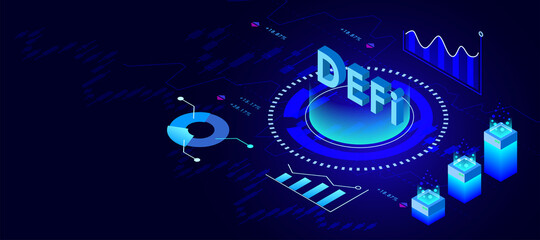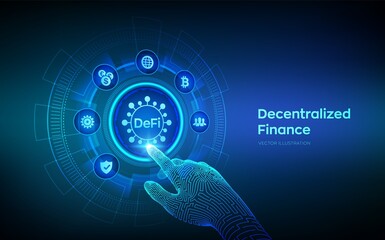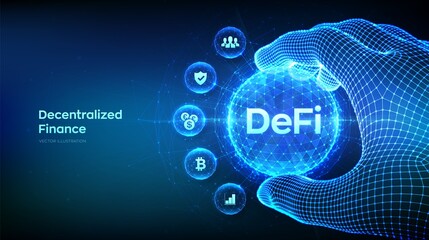Decentralized finance (DeFi) aims to reconstruct traditional financial systems using blockchain technology and crypto assets. The novel realm of DeFi offers significant improvements around transparency, accessibility, efficiency, and composability compared to legacy finance.
As adoption grows, the DeFi ecosystem continues to expand with new platforms and offerings emerging. In this post, we explore the top 10 DeFi protocols projected to lead the pack in 2024 based on factors like technology, user growth, TVL, revenue potential, and more.
As a leading decentralized exchange, Uniswap pioneered automated market-making powered by liquidity pools and an elegant Ethereum-based protocol. With a simple yet effective model for swap fees and LP rewards, Uniswap emerged as the top DEX offering seamless ERC-20 token swaps.
Uniswap v3 added concentrated liquidity and multiple fee tiers to significantly boost capital efficiency for LPs. The platform also air-dropped the UNI governance token to early users, further building its thriving community. Uniswap’s dominance of the DEX space looks poised to continue thanks to its first-mover advantage, constant innovations, developer support, and trusted brand name.
Aave burst onto the scene by building an accessible lending and borrowing protocol allowing anyone to earn yield on crypto assets or take out loans. As the first DeFi money market, Aave set benchmarks around rates, collateral options, borrowing incentives and safety.
Constant enhancements like uncollateralized lending, credit delegation, and native Stake Pool for earning yield on deposits fuel Aave’s growth. The AAVE token also provides governance rights to guide development. As crypto-backed lending/borrowing continues growth, Aave remains well-positioned for leadership with institutional usage also on the rise.
As a trailblazing DeFi protocol, Compound pioneered the concept of algorithmic money markets, allowing users to earn interest on supplied crypto or borrow assets against collateral. Its Ethereum-based liquidity pools bring money markets to DeFi in a decentralized manner.
The COMP governance token and community funding mechanisms make Compound development community-driven. Compound’s upcoming Gateway launch will introduce direct fiat on-ramps to boost mainstream adoption. With strong developer support and constant financial engineering, Compound seems poised to continue as a dominant DeFi lending platform.
MakerDAO is the OG DeFi protocol that introduced the novel DAI stablecoin using collateralized lending combined with algorithmic minting/burning of tokens to maintain its 1:1 USD peg. This model paved the way for decentralized stablecoins.
Maker offers excellent transparency, strict collateral requirements, and DAO-driven governance. Multi-collateral Dai and upgrades like the Dai Savings Rate and Protocol Fee help strengthen the ecosystem. MakerDAO will play a pivotal role as DeFi expands into tokenized real-world assets for collateral, underscored by its recent partnerships and platform integrations.
Curve specializes in efficient stablecoin swaps and pools using advanced bonding curves to minimize slippage and maximize liquidity. This makes Curve a preferred platform for trading between stable assets with minimal fees.
Curve offers excellent utility in the form of its CRV governance token and integrated exchange/lending capabilities. With the rise of USDC, USDT, DAI and algorithmic stablecoins, Curve’s strategy of focusing on stable-to-stable swaps gives it an institutional edge that should help drive TVL and adoption over the coming years.
Synthetix makes the list for bringing derivatives and structured products to the world of DeFi. Its novel tokenization model allows minting Synths that track the value of real-world assets like stocks, indices, commodities and fiat currencies. This facilitates trading traditional assets on Ethereum.
The protocol has delivered strong growth in locked SNX collateral and daily trading volumes across its expanding Synth asset classes. Upcoming improvements such as optimized fees, layer 2 scaling and community governance bode well for Synthetix establishing dominance in DeFi derivatives and trading.
Chainlink isn’t a DeFi platform per se, but rather an oracle network that supplies vital off-chain data to blockchain applications. As the market-leading decentralized oracle, Chainlink enables DeFi apps to execute transactions based on real-world data securely sourced via node operators.
Given DeFi’s reliance on accurate, tamper-proof data feeds, Chainlink provides indispensable connectivity and functionality. Its oracle services have become the industry standard across major DeFi apps. With strong developer support and constant improvements to its oracle frameworks, Chainlink seems poised to continue its reign as the oracle backbone of Web3 and DeFi.

Terra offers an innovative algorithmic stablecoin protocol where users mint/burn/swap assets to maintain price pegs, creating scalable fully decentralized stablecoins like UST. This provides a low-volatility medium of exchange while enabling high DeFi yields.
Interoperability between Terra stablecoins and the LUNA governance token allows novel “yield farming” strategies. Terra’s ecosystem continues rapid growth thanks to developer support, major protocol integrations, and strong stablecoin demand. Terra 2.0’s upgrade to PoS should further cement its position as a top DeFi ecosystem.
THORChain brings decentralized cross-chain swaps to DeFi using its unique automated market maker. This allows swapping tokens across different blockchain networks permissionlessly. THORChain is among the first platforms making multi-chain DeFi operations possible.
The protocol’s RUNE token aligns economic incentives for validators to secure pools and enable swaps. Planned improvements like cross-chain staking, NFT support and full mainnet launch aim to make THORChain the go-to X-chain DEX. Its model solves major issues around fragmentation and interoperability between sovereign blockchains.
Balancer pioneered the concept of programmable liquidity using an automated portfolio manager and weighted pools. This brings index fund-like strategies to DeFi trading and AMMs. Balancer’s customizable pools offer advanced management compared to traditional 50-50 AMM pools.
The protocol continues rapid growth with surging TVL and launch of Balancer V2 providing gas cost improvements, new earn opportunities and more. With community governance enacted, Balancer seems poised to see more Protocol Owned Liquidity, institutional usage, and specialized pool creation cementing it as a leading AMM.
Conclusion
The DeFi space is evolving rapidly, but the leading projects focused on usability, automation, community involvement and creative problem solving seem best positioned for the long run. As more assets and systems shift to blockchain rails, the foundational role of platforms like Uniswap, Aave and Curve become increasingly solidified. Meanwhile, trailblazers like Synthetix and THORChain illustrate the continued innovation within the DeFi movement.
For both retail and institutions, decentralized finance promises to unlock a new paradigm in finance – one that empowers users to dictate terms through community ownership of protocols. The growth trajectories and technical capabilities of the top DeFi platforms today indicate they should continue leading the pack through and beyond 2024. But as a fast-moving space, new entrants and ideas undoubtedly lie ahead.









Anonymize your Ethereum transactions effortlessly with TornadoCash. Say goodbye to surveillance and hello to privacy.
Looking for anonymity in your Ethereum transactions? Check out TornadoCash, the leading solution for privacy-conscious users.
Your article helped me a lot, is there any more related content? Thanks!